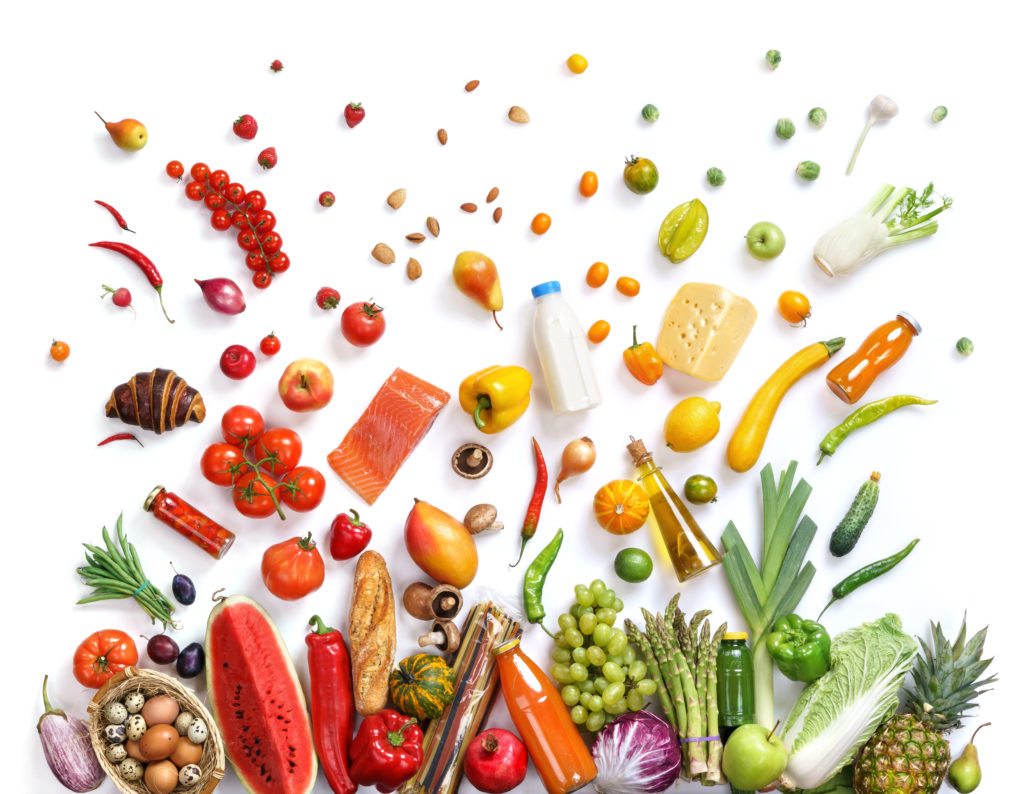U.S. News and World Report has unveiled the best ranked diets overall for 2018—and no, unfortunately none of them condone eating a gallon of ice cream. So check out these 10 highest ranked (and lowest ranked) diets, according to their long-term success rates.

The Winners: Top 10 (starting with the best)
1. DASH Diet
At No. 1, the DASH Diet may be the easiest diet you’ve ever followed. DASH is an acronym that stands for Dietary Approaches to Stop Hypertension, or high blood pressure and cholesterol. This diet is a plant-focused diet that encourages food such as fresh fruits, vegetables and lean meat, while discouraging food high in saturated fats or high in sugar content.
2. Mediterranean Diet
This diet prohibits the consumption of red meat, sugar and saturated fats. The end results? Weight loss, cancer prevention and a healthy heart.
3. Flexitarian Diet
Be a part-time vegetarian with this plant-based diet that permits you to give into your carnivorous cravings every so often. According to registered dietitian and author Dawn Jackson Blatner, Flexitarians have a lower risk of diabetes compared to avid meat eaters.
4. Weight Watchers Diet
Join Weight Watchers along with millions of Americans dropping two pounds weekly using the SmartPoints system to track their daily calorie intake.
5. MIND Diet
The Mediterranean-DASH Intervention for Neurodegenerative Delay hopes to prevent Alzheimer’s disease with superfoods proven to support healthy brain health, such as blueberries, salmon, avocado and nuts.
6. TLC Diet
Fatty meats, whole-milk dairy and fried foods are loaded with saturated fats. The TLC Diet strongly advises against these foods. By following this regimen, your risk of heart attack and stroke from high cholesterol may decrease.
7. Volumetrics Diet
Counting calories is a thing of the past—it’s all about counting density now. This program is great for weight loss, as it urges you to eat less high-density food and more low-density food such as fruits and veggies.
8. Mayo Clinic Diet
Forget the food pyramid you once knew—the Mayo Clinic Diet has its own pyramid, including mainly fruits, vegetables and whole grains. According to U.S. News and World Report, you will lose six to 10 pounds the first two weeks and one to two pounds each additional week on this diet.
9. Ornish Diet
According to the Ornish guidelines, your diet should consist of beans, legumes, whole grains and vegetables. Only 10 percent of your diet should be fueled by fats. You should also exercise for one hour three times a week. Your goal weight has never looked more realistic.
10. The Fertility Diet
This diet focuses on food that promotes fertility. For example, drink whole milk rather than skim milk. Imitate Popeye and eat plenty of iron-rich foods such as spinach, beans, tomatoes and beets.
The Losers: Bottom 10 (starting with the worst)
10. Ketogenic Diet
On the list of food to avoid while on this diet are grains, fruit, sugar and tubers. Meats, leafy greens, dairy and low-carb sweeteners, however, are a go. Although this diet could potentially manage and prevent diabetes, many individuals report a lack of energy while they adjust.
9. Dukan Diet
The Dukan Diet is known for being pretty restrictive. No carbohydrates, even vegetables low in carbohydrates, are allowed. Fatty foods, such as eggs and steak, are also frowned upon.
8. Whole30 Diet
This 30-day plan is the dream, unless you cheat that is—then you’ll have to avoid grains, dairy, soy and sugar for another 30 days. Just beware, though, that cutting out these foods will lower your fiber, iron and vitamin intake.
7. Body Reset Diet
The downside of this diet? You can’t eat solid food for 15 days. Instead, reset your metabolism by eating a smoothie-based diet over the course of two weeks—slowly incorporating solid food back into your diet. Weight loss is almost guaranteed.
6. Atkins Diet
Bread, pasta and potatoes are your new worst enemies. Lean proteins, healthy fats and vegetables high in fiber are your new allies. One pro? You will shed unwanted weight quickly. One con? You will need to be on this diet for the rest of your life to keep the weight off.
5. The Fast Diet
During the Fast Diet, you will eat regularly five days out of the week and restrict yourself to a few calories the other two days. This regimen is not recommended for pregnant women, seniors or children. Consult your primary care physician before starting this diet.
4. Supercharged Hormone Diet
This diet is a six-week program that brings the focus around to healing your body’s chemistry through detox, a reintroduction of food and exercise.
3. Raw Food Diet
Mainly plant-based, this diet also encourages the consumption of raw eggs and dairy. The claim is that when foods are cooked, healthy enzymes are destroyed. On the other hand, experts have warned against consuming raw food due to harmful bacteria.
2. Paleo Diet
According to Paleo guidelines, animal protein and plants should be our main source of energy. The downfall? This diet can be fairly expensive.
1. Acid Alkaline Diet
If you dare follow this diet, limit food high in acidity such as red meat, fruit, herbs and spices. The average pH level in humans should be between 7.35 and 7.45. Proponents of the diet believe that consumption of acidic food will raise this number above its recommended level. Most doctors, on the other hand, say that no matter what you eat, your pH levels won’t be significantly affected. This diet promotes weight loss and longevity.
Sources: health.usnews.com, healthline.com, webmd.com, health.harvard.edu, everydayhealth.com, cnn.com






